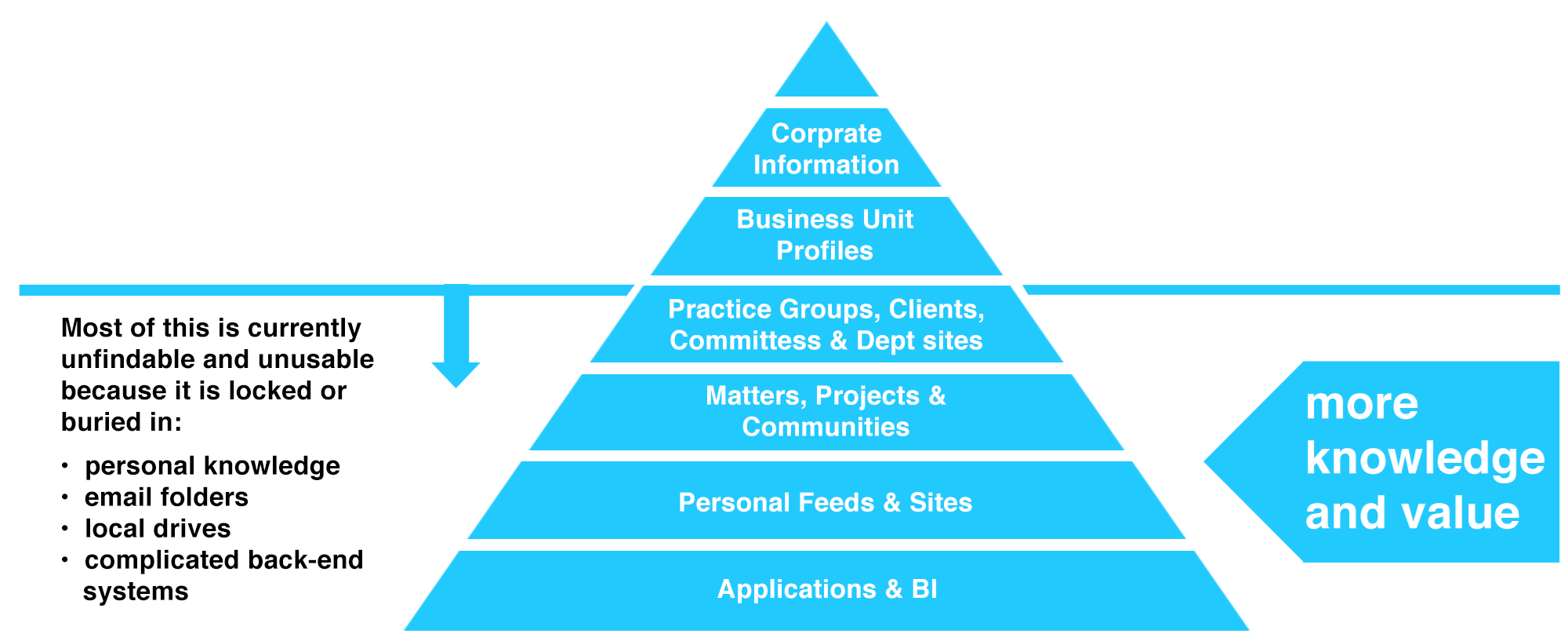April 05, 2016
A sense of urgency for legal firms.
The annual Report on the state of the legal market recently issued by the Center for the Study of the Legal Profession at Georgetown University Law Center and Thomson Reuters Peer Monitor, notes a sixth consecutive year across the legal industry of largely flat demand, weakening pricing power and of interest to us at Valtech, failing productivity.
The legal landscape has been reshaping since the economic collapse in 2008 and law firms are facing significant challenges including:
- Intense competition
- Globalization and firm mergers
- Pressure to reduce costs
- Increased focus on client needs
"Fundamental shifts such as we have seen in the market for law firm services since 2008 require firms to take a hard look at the long-term viability of operating and pricing models that have worked well in the past but may be at risk in the newly developing market environment,” said James W. Jones, a senior fellow at the Center for the Study of the Legal Profession and one of the report's authors. “Firms that are able to redesign their models to better respond to the changing demands and expectations of their clients will have a substantial long-term competitive advantage.”
In conjunction with the operational shifts that are needed for viability, or how law firms do their work, the definition of where they work is also shifting. Work is no longer being done exclusively on desktop or laptop computers. Employees want to get work done outside of office hours and need to use their mobile devices to work remotely.
However, changing where firms do their work is not as easy as it as it seems. Many firms have a myriad of applications, solutions and platforms with varying degrees of implementation and mobile maturity. Integrating them involves frustrating multi-year homegrown projects that never keep up or meet needs or expectations.
If a firm has a reasonable mobile or remote experience, operational information and content is distributed across so many systems that it’s difficult to know what is the ‘go-to’ system for a specific piece of information. This all results in inefficiency, frustration, duplication and consumption of stale or inaccurate information. Email is relied upon to the point the volume is getting out of control and important emails are missed. The really valuable knowledge is increasingly locked away in people’s heads, inboxes and email folders, local or shared drives, or complicated back-end systems - none of which are easily searchable or available for people to make better decisions, be more productive or raise the level of operational excellence across the firm.
It is not surprising that user-centric digital workplace expectations are growing not only from these inefficiencies, but also from staff with experiences at other firms, as well as, general consumer experiences. Those expectations need to be addressed.
The traditional vs. digital firm workplace
The latest PwC Law Firms Survey highlights that 80% of firms see a clear digital strategy as critical for the future yet just 23% say that they are underway. Many firms that are trying to evolve to a digital workplace are stuck, in part, because it’s complicated and where to begin isn’t always obvious.
The where and how law firms do their work are just part of the 7 traits that define the digital workplace which are:
- Adaptive structure and culture
- Open leadership
- Not bound by physical location
- Data-driven and intelligent
- Scalable workforce
- Better integrated into the customer, partner and competitive ecosystems
- Digital is integrated into the fabric of product and service
Decision making and investment is difficult especially with the scope of what is at stake. Unlocking the magnitude of the firm’s collective knowledge will take time. However, once firms understand the competitive advantage and value of accessing that knowledge and the current inefficiencies and costs of finding information the case is quickly made.
Consider the traditional firm intranet and its basic, static information and knowledge. Typically links to documents outlining operational policies and procedures, departmental profiles and further links to popular resources, and basic employee directory information. Yes, there are other systems and applications that provide supplemental information but it is never at your fingertips and it is rarely surfacing relevant information to your specific needs. Compare that to what is expected within a digital workplace. The traditional workplace is just the tip of the iceberg.

Below the current water line, is the true vastness and value for the firm. Knowledge, wisdom and insight that is easy to share, act on, and add to because it is findable, dynamic, relevant and available anywhere, on any device.
Practice Groups, Client, Committee and Department Sites:
- Integrated collaborative and secure team sites to keep email to a minimum and a place to centralize documents, calendars and tasks. Everyone working off of the same page
- of an open book.
- Greater collaboration, cross-selling and joint business development efforts across practice groups, offices, client teams, etc.
- Improved internal customer service of administrative departments through enhanced resources, training, work processes and support.
Matter, Project and Communities of Expertise Sites
- Increased productivity, leveraged knowledge across the firm with collaboration tools that enhance teams to work together.
- Communities of expertise to contribute to a growing collective excellence.
- Improved firm pricing knowledge and capabilities based on past experience and client knowledge.
Personal Feeds and Sites
- Expanded directory and personalization capabilities.
- Relevant and effective news, insight and knowledge that is dynamically surfaced to each user on any device.
Applications and Business Intelligence
- Integrated dashboards to live financial data and KPIs available anywhere at any time.
- Personalized views for each timekeeper so management, support staff and others can efficiently and effectively manage the Firm and Practice Group.
Making the case for a digital workplace
Implementing the system to support a digital workplace isn’t the silver bullet to the challenges facing the legal landscape. There are many aspects that need to evolve for an organization to function well and efficiently, not all of which can be replaced by a machine, even in our increasingly digital world.
The traditional culture is bound to resist and, for example, feel it is important to distinguish between billable and administrative positions. Some feel they must resist the temptation to drive nominal functionality and work back out to billable users under the guise of being digital and ‘self-serve’ as staff are in place to support those billable positions.
However, consider the value of human experience and knowledge that is locked up or siloed with nowhere to go, be discovered or be used. A digital workplace allows the full potential of each employee to contribute – billable or non-billable and perhaps that collective contribution and collaboration will be the catalyst for the innovation and digital culture shift that is required for specific changes for firm viability as noted in the conclusion of the annual Report on the State of the Legal Market.
“The economic pressures felt by most firms are not likely to dissipate in the foreseeable future. Under these circumstances, it would seem that more firms would be actively embracing the need to change their basic operating models – to design and implement new approaches to staffing and legal work processes, to explore new opportunities for collaboration with other service providers, and to adopt and market innovative strategies for the pricing of their services.
The needs for firm-wide digital workplaces have never been higher as they can accelerate and support the innovation shifts that are needed through better communications, knowledge management and collaboration. Despite frustrations, staff know there is a better way to work and expect more access and functionality to contribute to their fullest potential. In many firms, a new digital culture needs to be established and it starts with a digital workplace strategy and road map.





